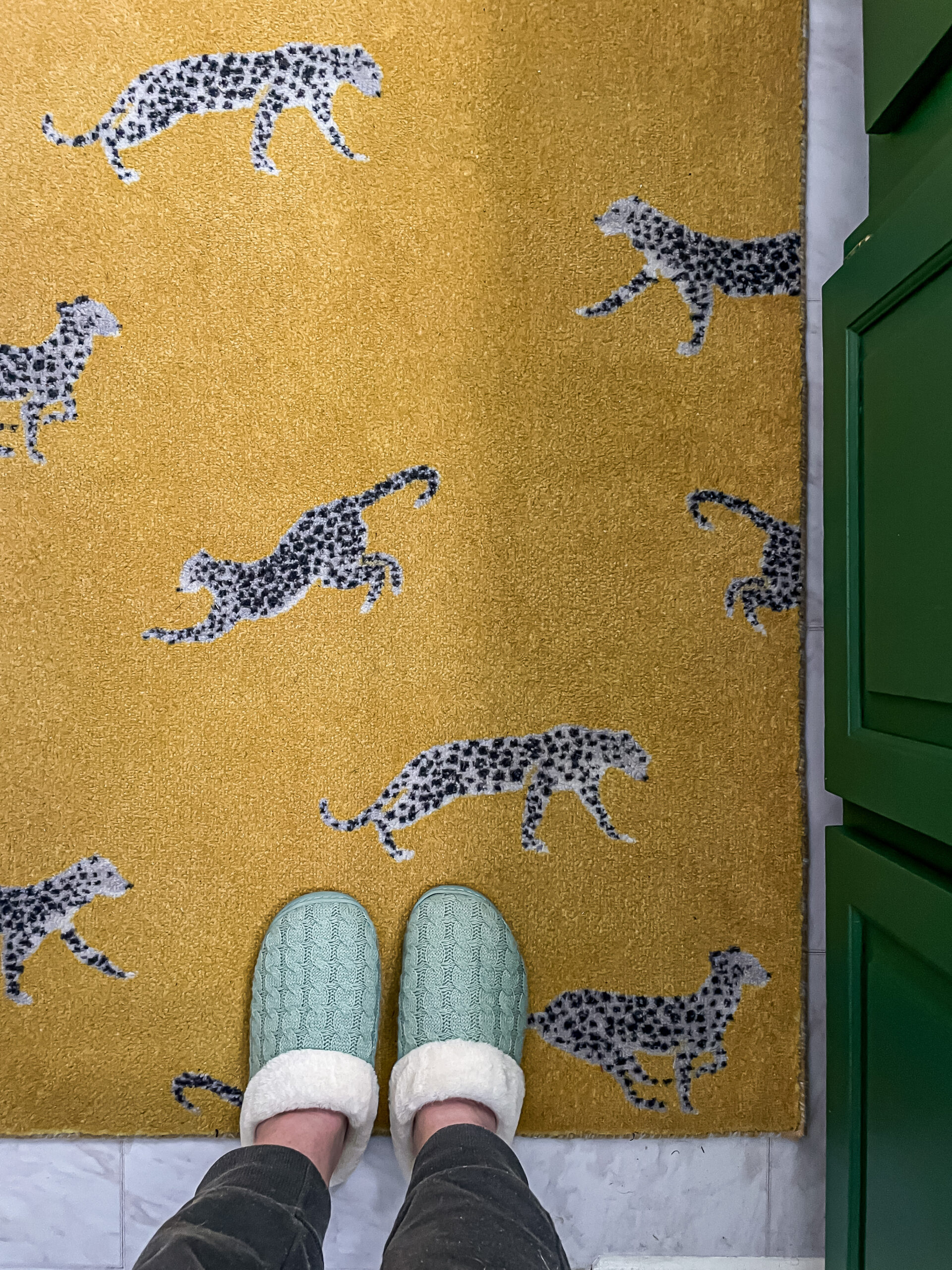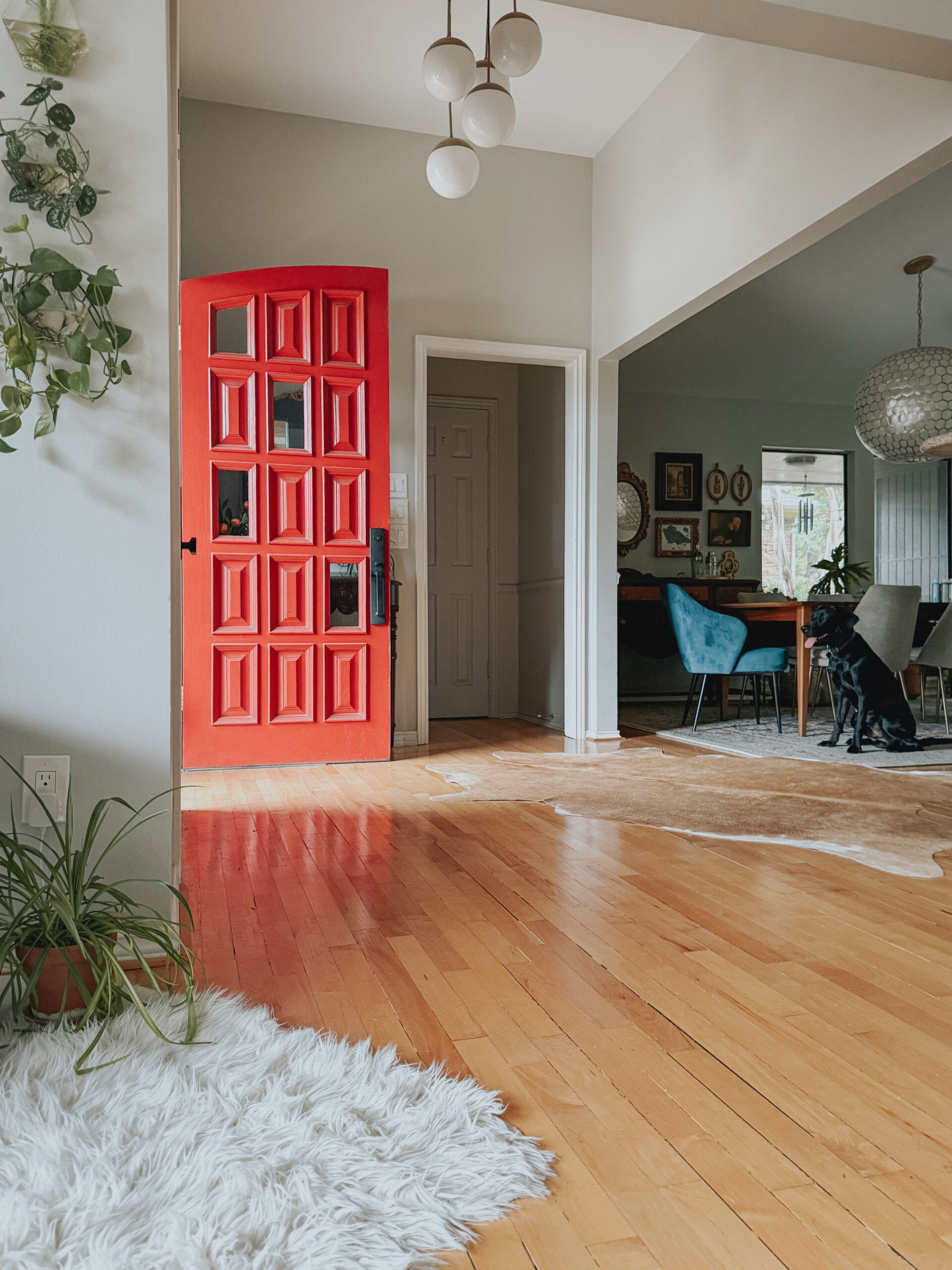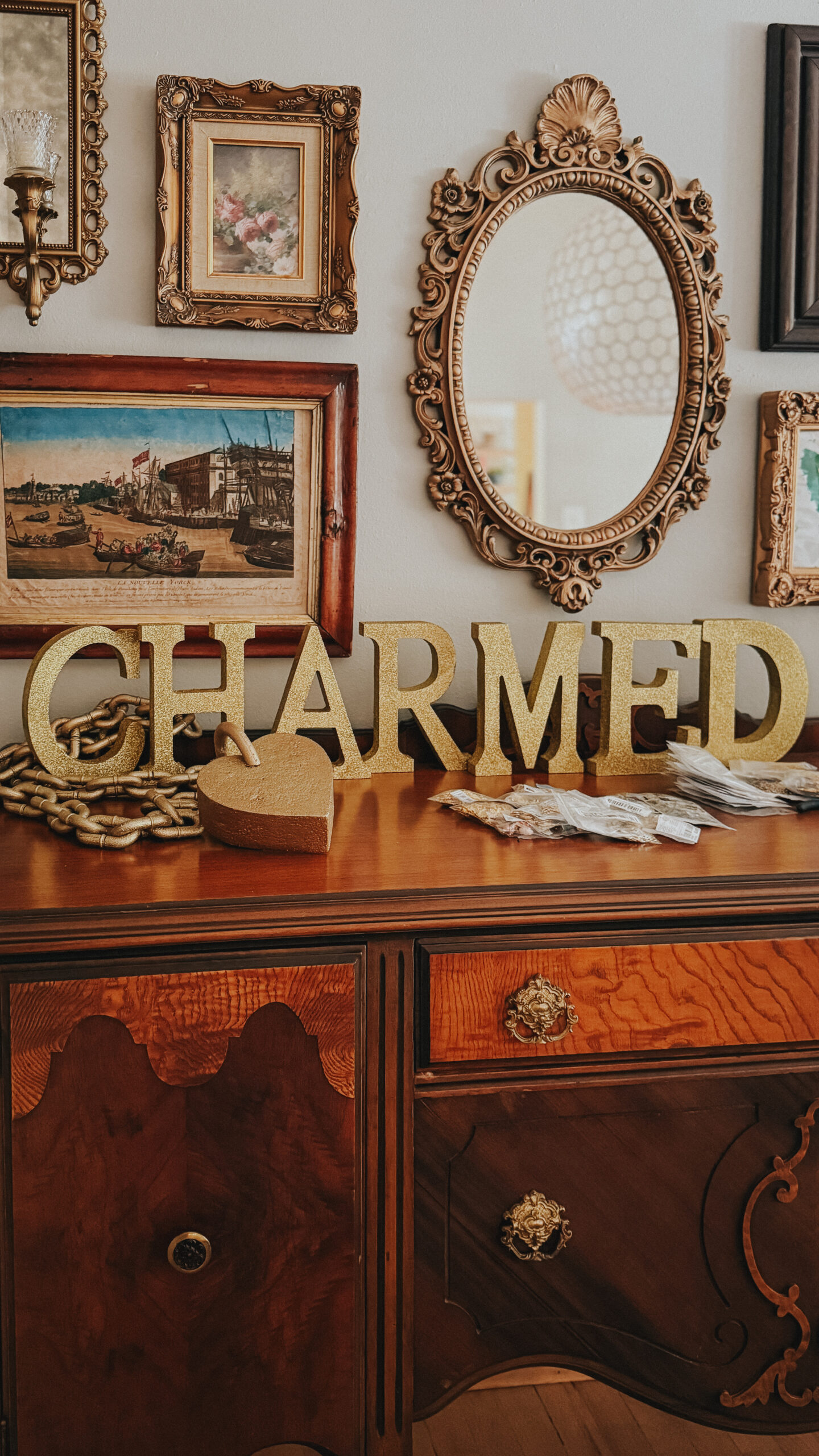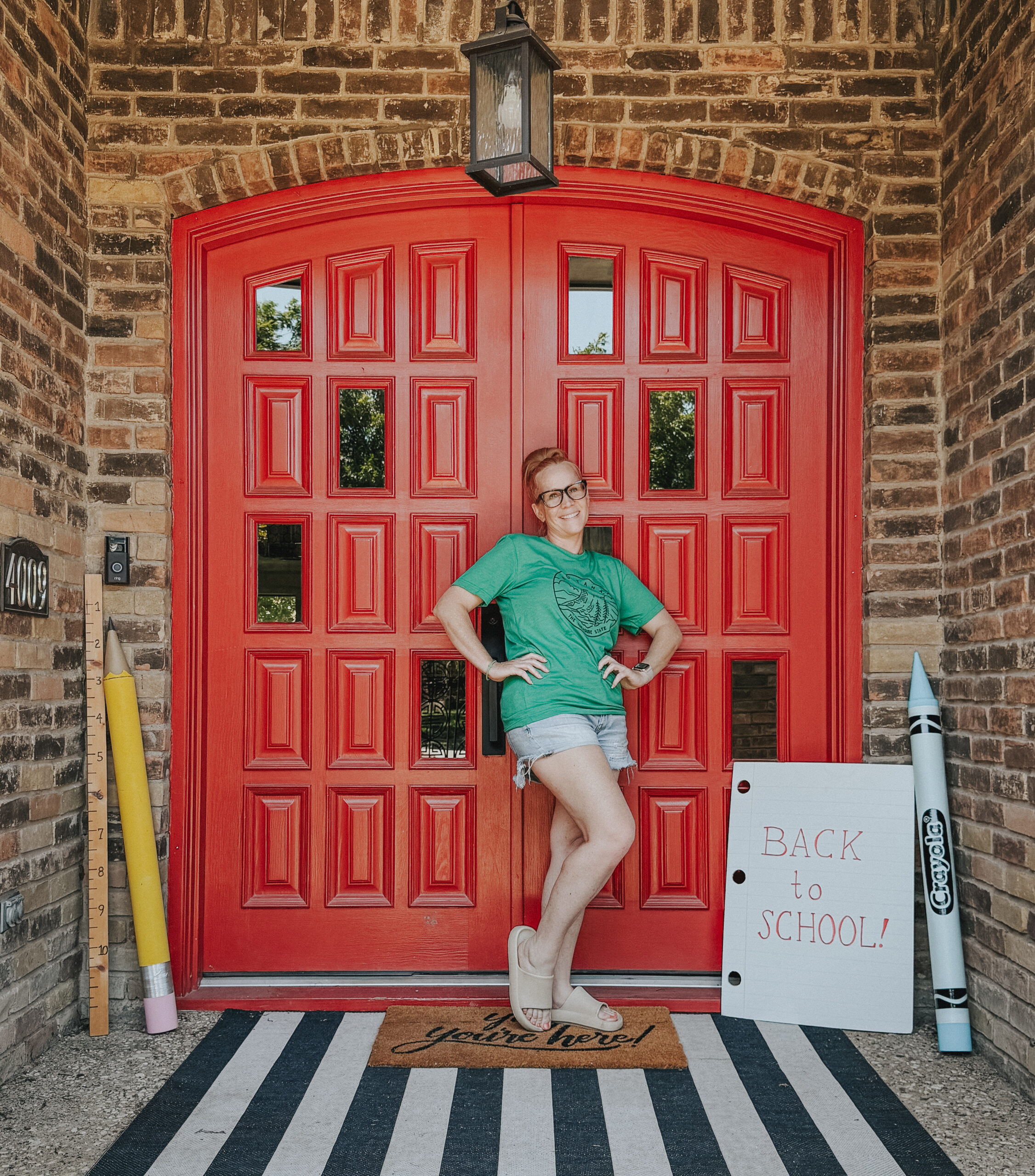Rugs are one of those things that oftentimes make people freeze when decorating a space. What colors? What patterns? What size? These are all very important things to take into consideration when choosing a rug (or rugs) for a room or space. While there are no hard-and-fast rules, there are a few that are helpful to stick to as you choose this important aspect of your space. Let’s dive in.
This post contains affiliate links. I may earn a small commission at no cost to you. Thank you for supporting my business.
Why rugs are important
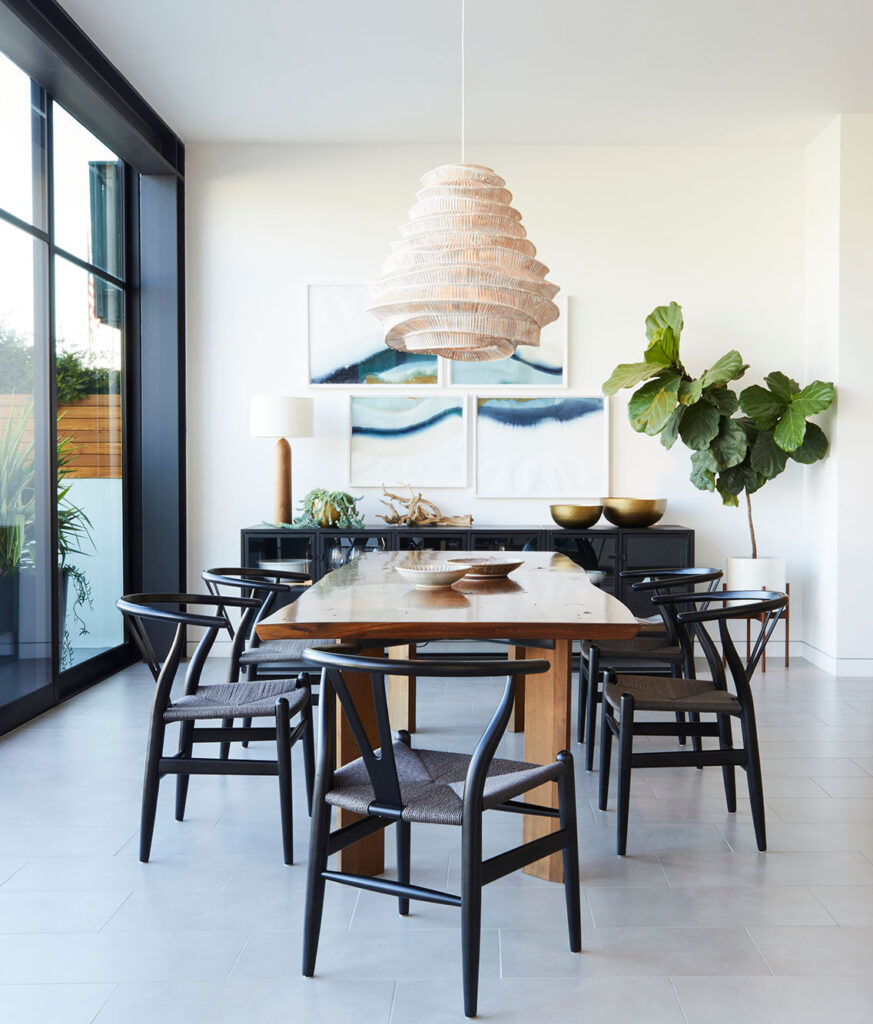
Let’s first look at why a rug is an important part of a room. Not only are they decorative and can pull the space together, they are functional for several reasons. Have you ever seen a room (I especially see this in dining rooms and living rooms) with big furniture and NO RUG? I gasp evertime. Why? First, they provide something soft to walk on. Second, they are a sound barrier. Third, they provide warmth not only in colder months and temperature-wise, but also warmth in the design sense.
Rugs pull a space together and to me, they are the final piece to the design puzzle. Look at this dining room with no rug. Doesn’t it look like it is just missing something? Personally, that tile looks cold to me. It makes my feet cold just thinking about walking on it. (and I live in Texas!) Think of how you would feel if you were in someone else’s home eating at this table. When you sit down or get up, wouldn’t you love to have something comfy underfoot and warm?
I see that this room is minimalistic in design, so I’m sure many designers would say adding a rug takes away from this style. Yet, there are so many rugs that can work in a minimal space without making it busy. A light colored solid gray or maybe blue would work great in this space.
Size
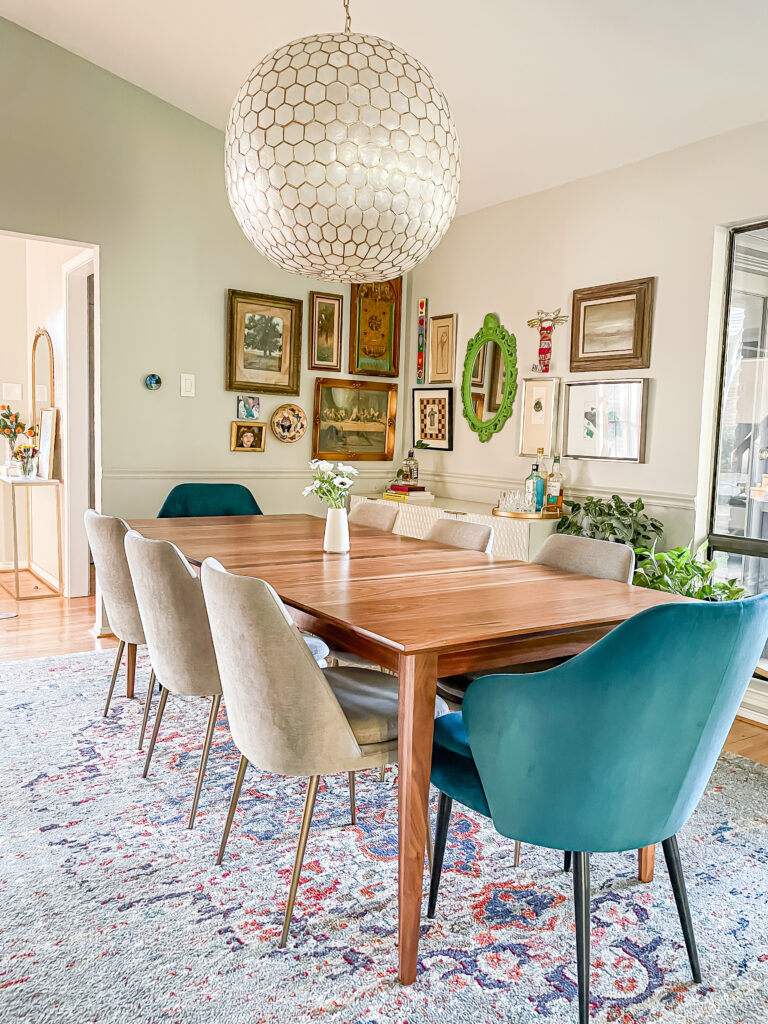
Size is hands down the number one thing people get wrong when it comes to rugs. Let me tell you the secret: GO BIGGER. If you question the size, it’s too small. Dining rooms and living rooms are usually the biggest victims to rugs that are too small. Most likely if you have a 6 person + table, you will need a 9×12 rug. It needs to be big enough for all chair legs to sit on the rug even when pulled away from the table.
As you can see here, if/when the chairs are pulled out they will still be on the rug. This is an 8-10 person table (there is a leaf that can go in the middle) and this rug is a 9×12. I understand that not all rooms will have the space for a rug that big, in that case just get the biggest size you can for the space that still allows at least 6 inches between the end of the rug and any walls, cabinetry, or other furniture.
As for living room rugs. Whew. I almost always see a 5×7 thrown in front of a sofa or sectional. 😳 Friends, please pinky promise me you won’t do this. Never. Ever. A 5×7 rug is almost always too small for any living room. You want at least the front legs of your furniture on the rug. It helps ground it into one cohesive space otherwise it looks like the rug is arbitrary and floating in the middle of the floor. Here are a couple of examples. The homes look beautiful, but the rugs are just not working. You want your feet to be able to feel the rug underfoot when you get up from your sofa or chair. I’d venture to guess the room on the left photo could use a 8×10 and the one on the right definitely could use a 9×12 or maybe even a 10×14, depending on the dimensions of that sectional (it looks pretty big).
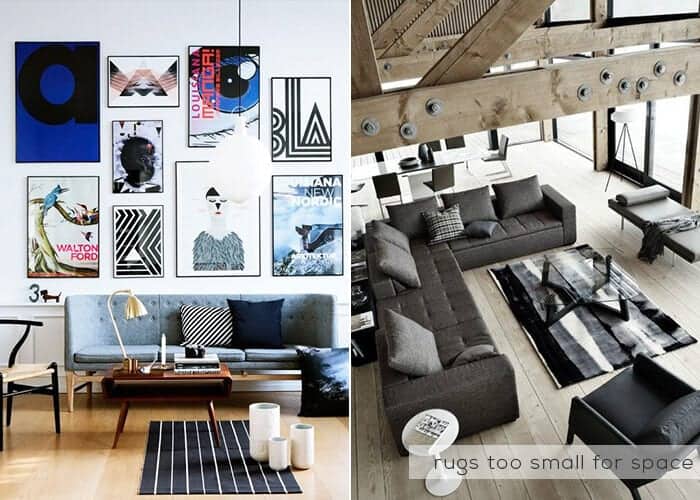
Bedroom rug sizes are also often too small. Do you see a pattern here? Too small rug syndrome? I often think people are afraid to spend the money on a bigger rug, because we know rugs can get expensive. I am here to tell you, there are so many rug options that are budget-friendly and even in 5 years or so if you had to replace it or changed your decor, it would be reasonable to replace.
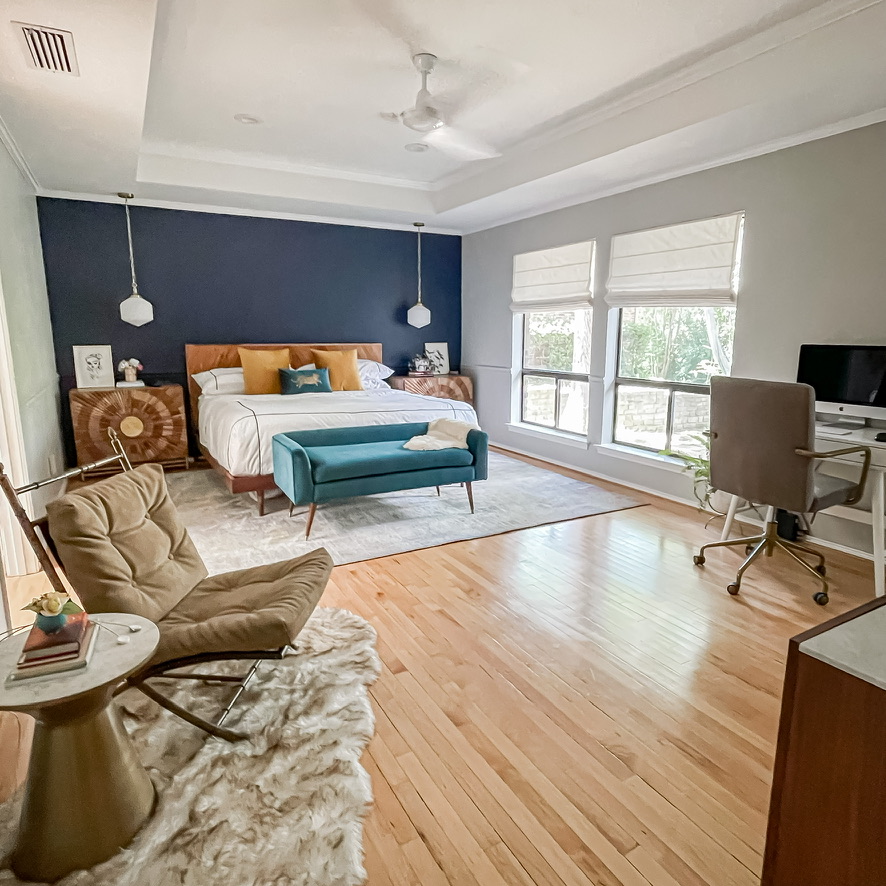
Now back to the bedroom. A rug should go perpendicular to the bed, meaning it goes horizontal when facing the bed. It should go under the bed and come out enough on each side of the bed that when you get out of bed your feet have plenty of room on the rug. Usually the rug does not go all the way to the wall, but just in front of your side tables or nightstands.
A twin bed usually can use a 5×7 or 6×9, a full 8×10, a queen 8×10 (and sometimes a 9×12 if the room allows), and a king 8×10 or 9×12, if you have space and want a bigger rug. Our bed is a king and we have an 8×10 rug pictured here.
Adding rugs in unexpected places
Rugs aren’t just for the main rooms, but also think of runners for kitchens, in front of your bathroom vanity(ies) and fun rugs vs. bath mats in front of your tub and/or shower. I love adding a fun runner in a bathroom simply because there are so many options when it comes to designs and styles. Bath mats are almost always a solid color and frankly, pretty boring. Not to mention…you guessed it…SMALL! We have this big fluffy, soft runner in our bathroom and I just love it. It’s a super fun design and has loads of color. Also, this makes it easier because it is one big rug instead of two small ones in front of each sink. In my boys’ bathroom, I added this amazing cheetah rug and it is probably my favorite rug in the whole house! I got it when Anthropologie was having a 20% off sale and you can add yourself to their email list to get notified of sales. In our newly made over guest bath I added two rugs (more on layering like this below) for the same reasons stated above. How cute are these?
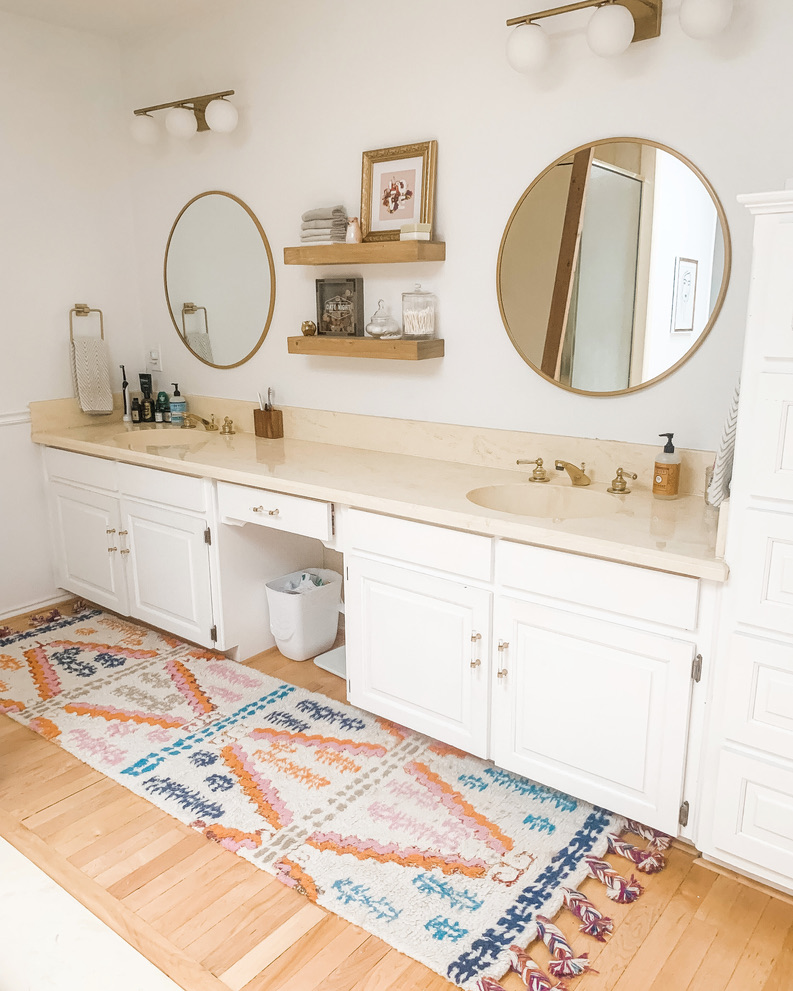
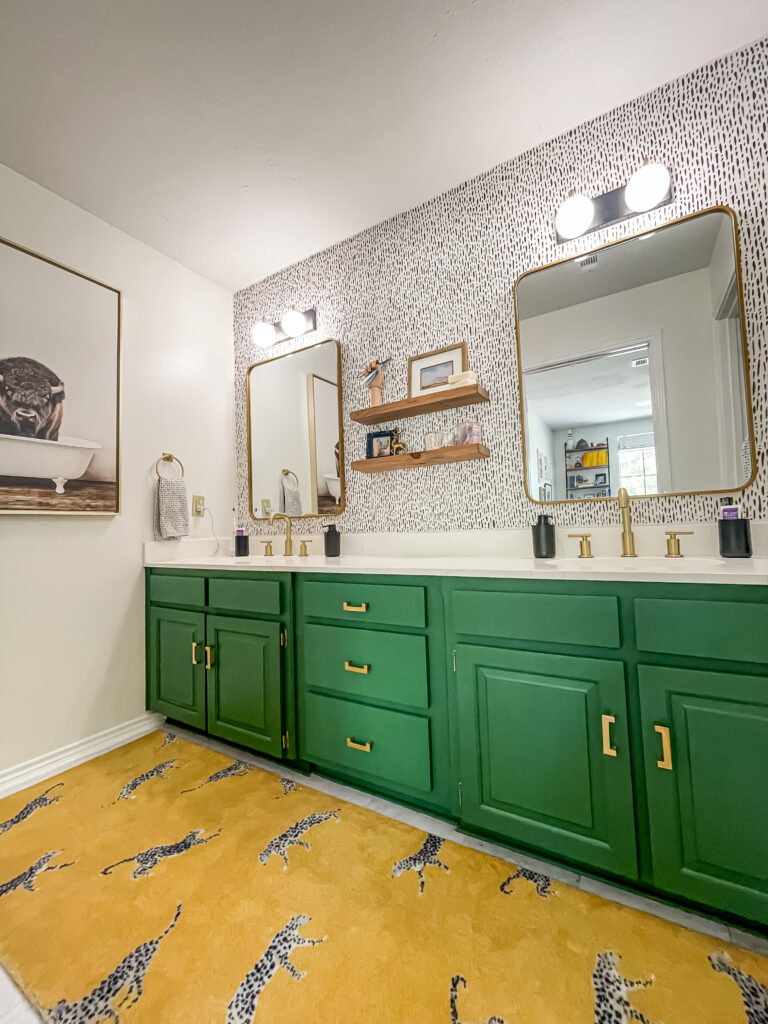
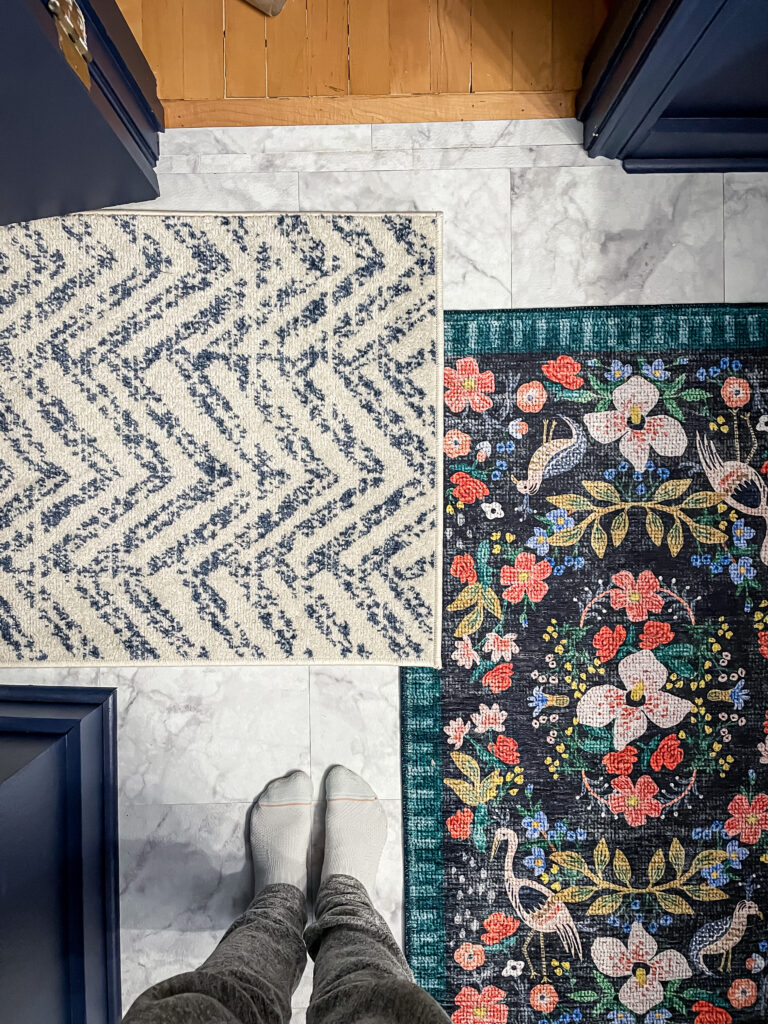
Layering rugs
This is probably my favorite thing when it comes to rugs. Layering!! I can’t even begin to tell you how many ways and places you can layer rugs. Let’s start with the big rooms.
The living room. First, find a rug you love that fits your space in terms of style and color. Vintage rugs, cowhides or animal prints, and sheepskin rugs are great for layering because you can add them to modern spaces to mix styles. You can also add them on top of a more modern rug like a solid color, jute, or sisal. This is the easiest way to layer especially for a beginner. Your bottom rug will need to be one of the sizes discussed above. Your top, or layering rug, should be one or two rug sizes smaller than that. So, if you’re using a 9×12 (you’re using a 9×12, right?? 😉) then get an 8×10. Here are several great layered rugs.
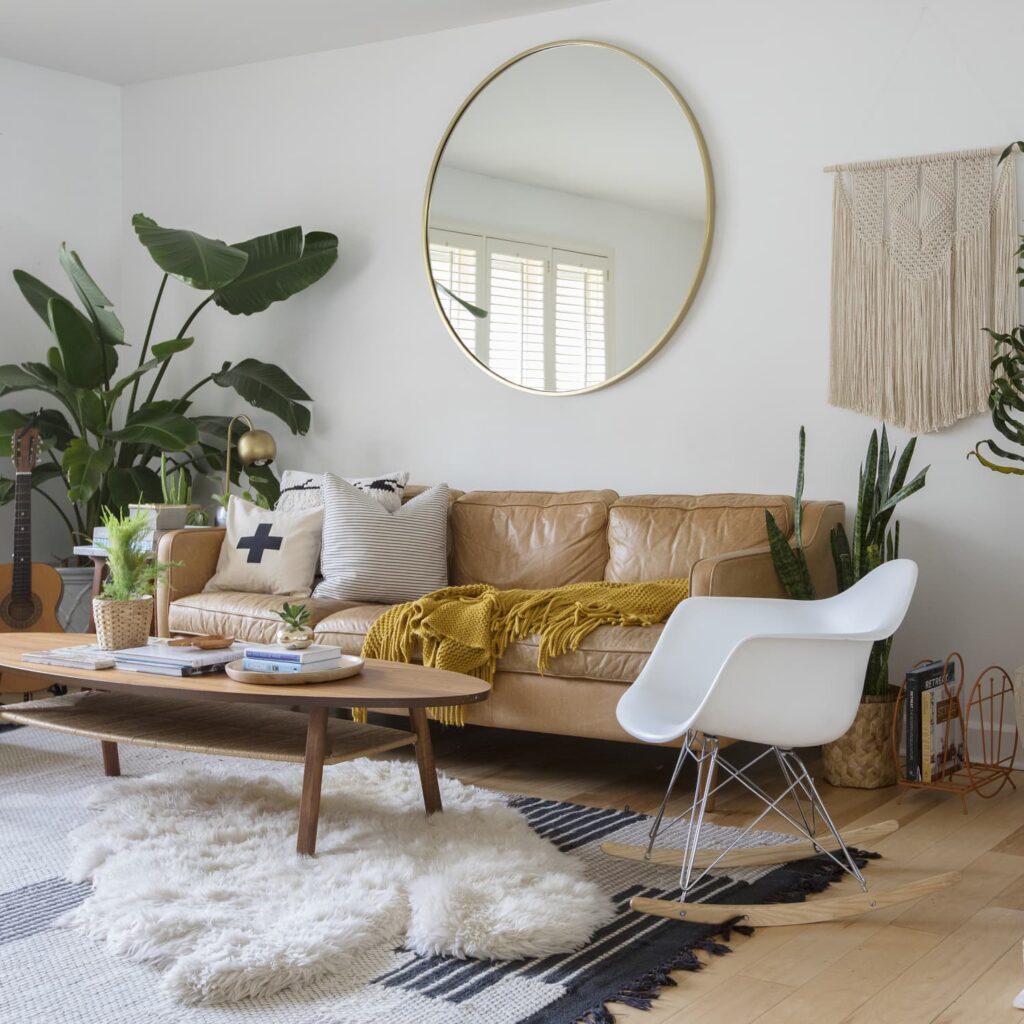

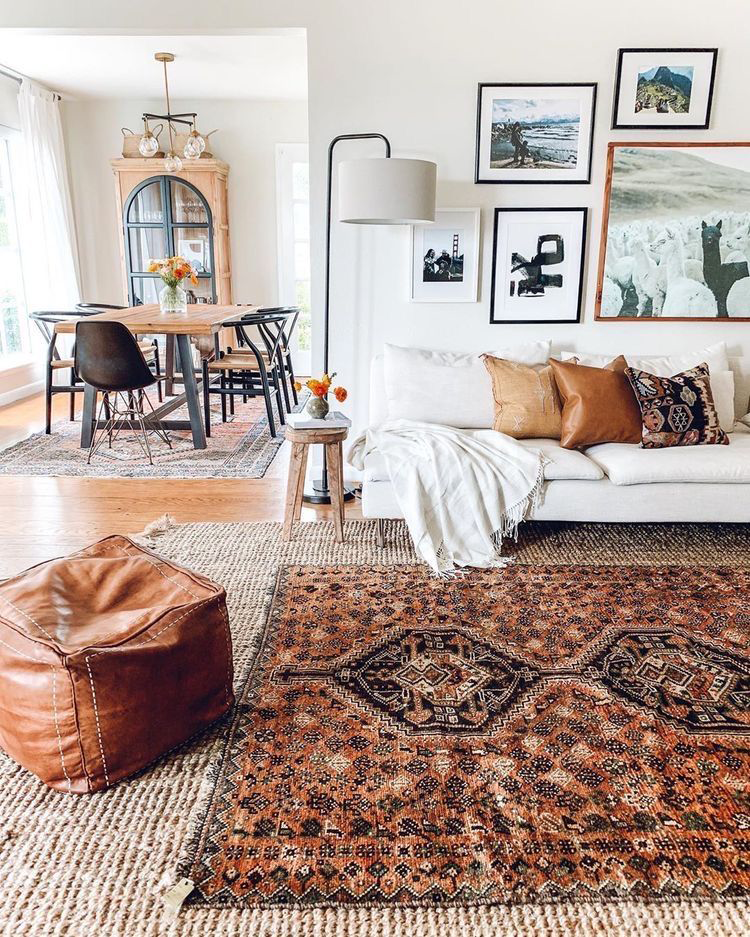
Image sources from L to R: Apartment Therapy, Mouery’s Flooring, Chloe Minik
Ok, so how do you layer it and make it look cohesive? Glad you asked. Here is a little rule-of-thumb when layering rugs. First, it’s easiest (especially if you’re new to layering) to start with a solid rug as your base. In the picture on the far left it has a patterned rug as the base. It works here because the top rug is solid and has a different texture. Remember, colors and textiles have texture or create texture visually. Putting a patterned rug on top of the solid base is easiest because you can‘t really go wrong unless your room has patterned curtains or wallpaper. Then you’ll need to do some pattern play. The best way to do this is if you have a large pattern on the walls or curtains, use a small pattern in the rug. The pattern on the vintage rug on the right is considered small to medium. So curtains could have pinstripes or dots (small pattern). Also, play with the angle of the top rug. It doesn’t have to be on top and turned the same way as the base rug. Like the sheepskin and cowhide above.
Now let’s talk about layering rugs and bath mats in a bathroom for an unexpected, fun and texture-filled look! Don’t be afraid to put a small rug under your bath mat to create more visual interest and decor. I have this in front of our shower and in front of my boys’ shower here.
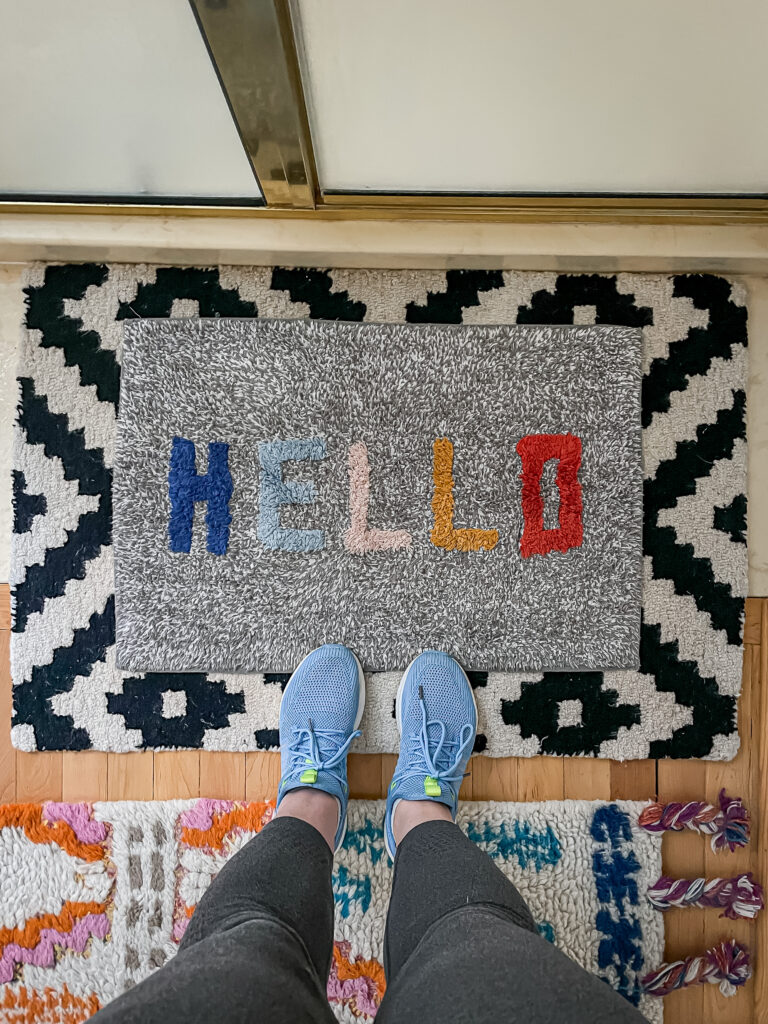
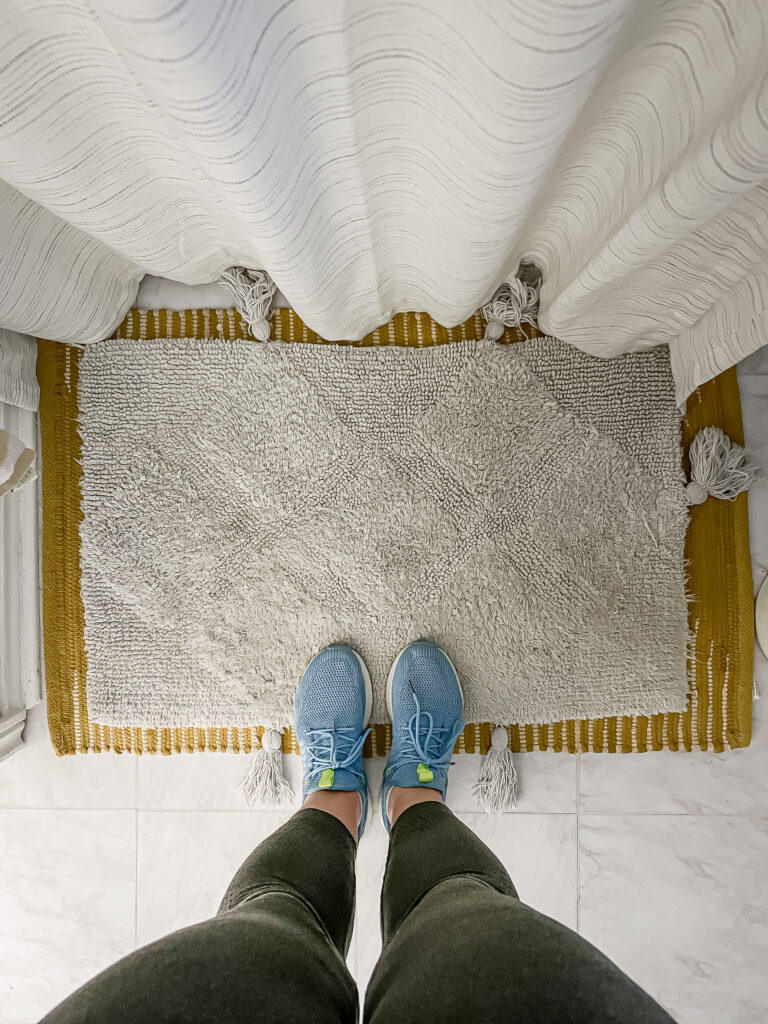
Create Zones
Creating zones with rugs can really pull together a space, especially larger ones that feel expansive. Living rooms are best for this because most people usually have a sofa/sectional and at least a couple of chairs. You can pull all these areas together by placing rugs under the different furniture so it isn’t floating around in the room arbitrarily.
In our living room, I have 3 seating areas so I have anchored them all with rugs. Sheepskin and cowhides are really my go-tos for these areas because they blend in with almost all design styles. They are NOT just for farmhouse and country. Look at my space, does it look farmhouse? No. It actually adds character and a bit of a wow factor, in my opinion. Notice I have also used layering to do this, even though they are on the corners of the rug. This ties all the furniture together into one area, even though they are not all together, per se.
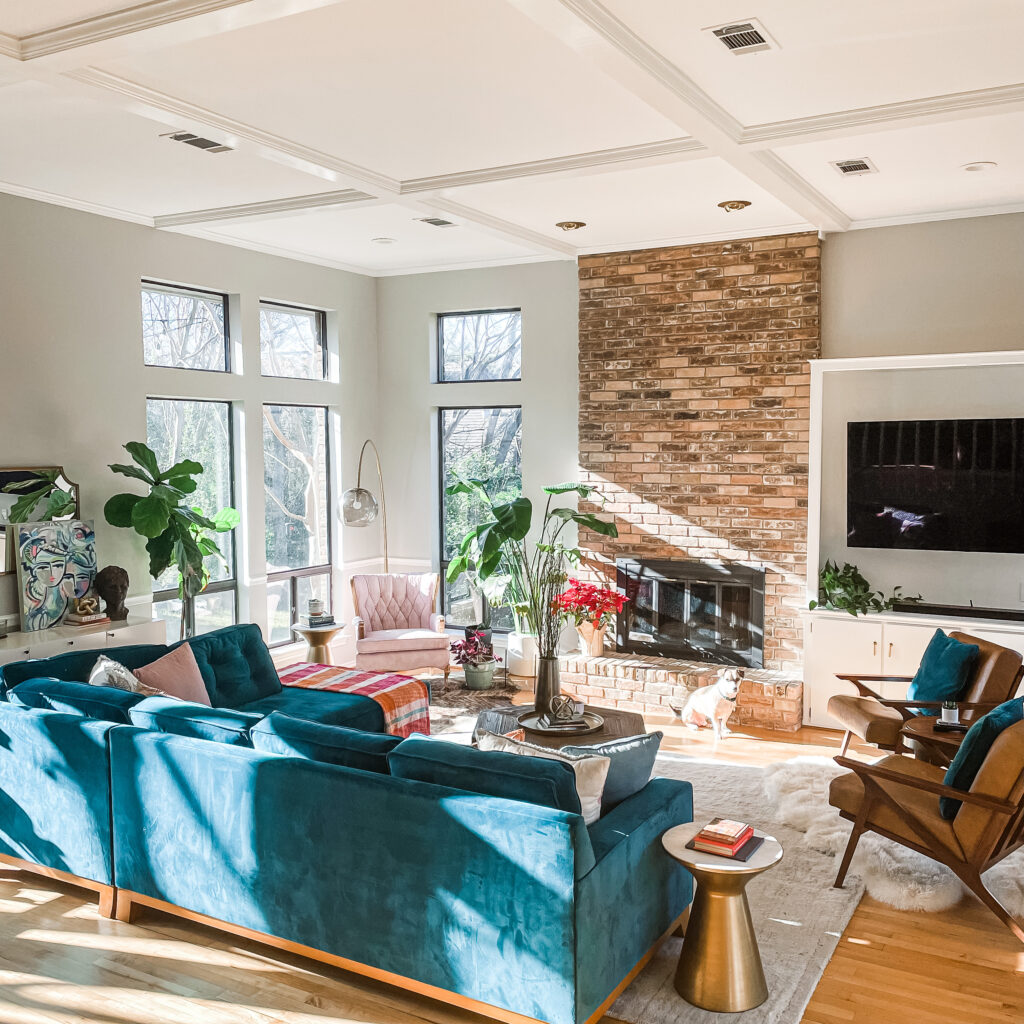
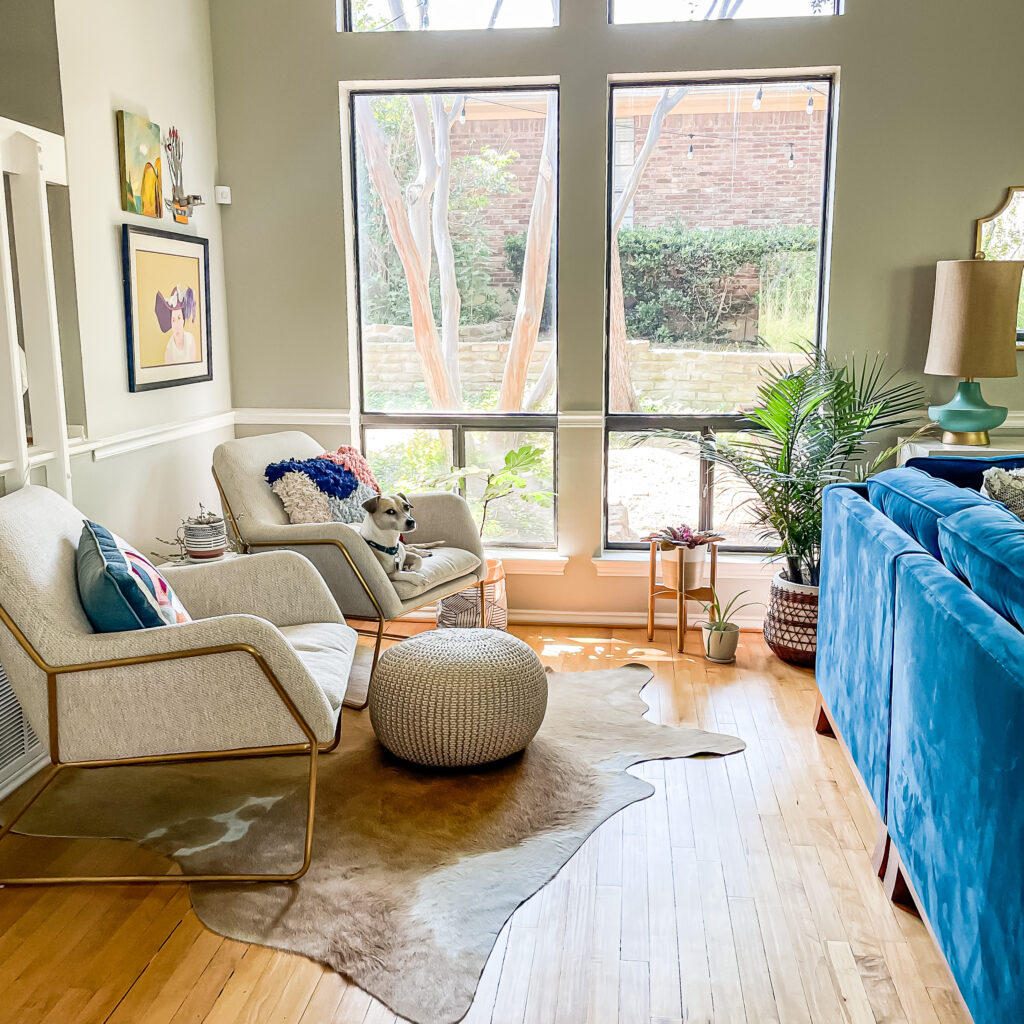
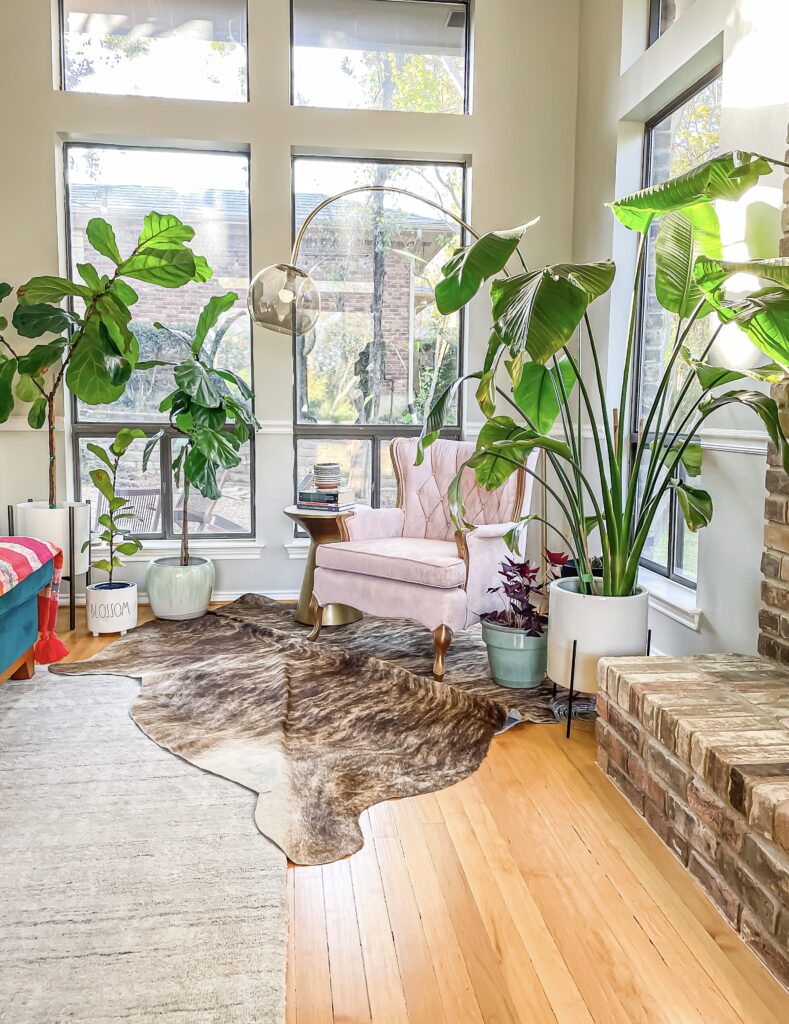
You can create a zone or ground any seating area with a rug. In a bedroom, this is usually a chair or set of chairs. This really finishes off the space and it adds depth and layering as well. I did this in my teenager’s room and in our bedroom here. As you can see, I love the sheepskins and animal hide rugs. If you do not feel comfortable buying genuine animal hides, there are great faux ones.
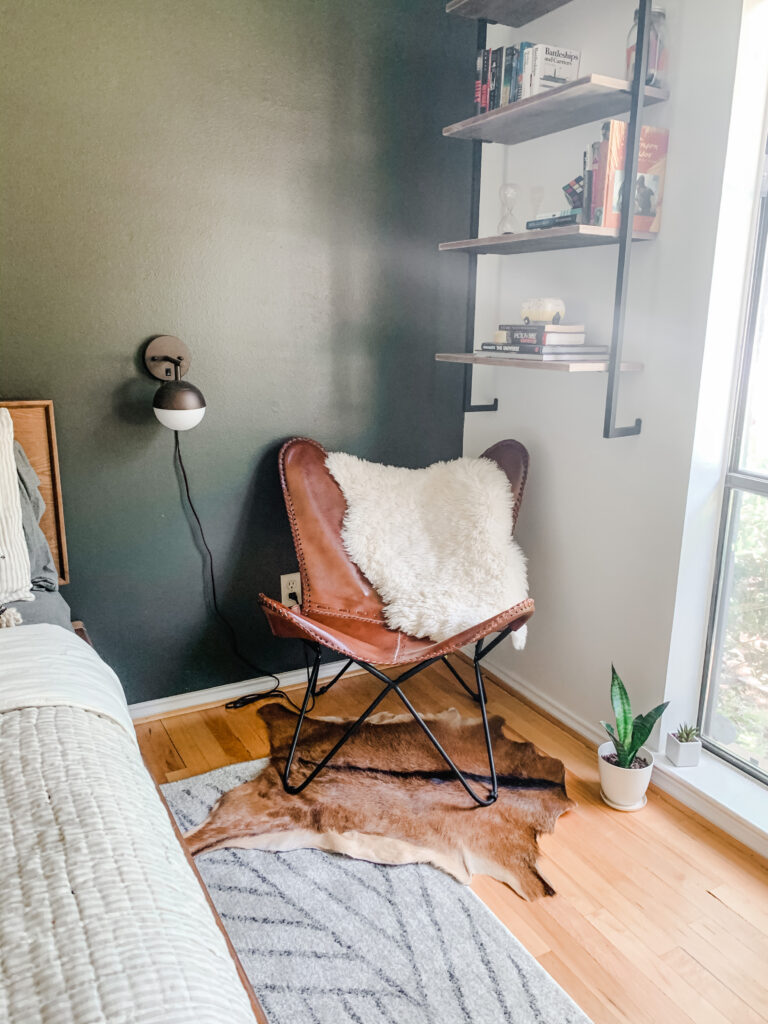
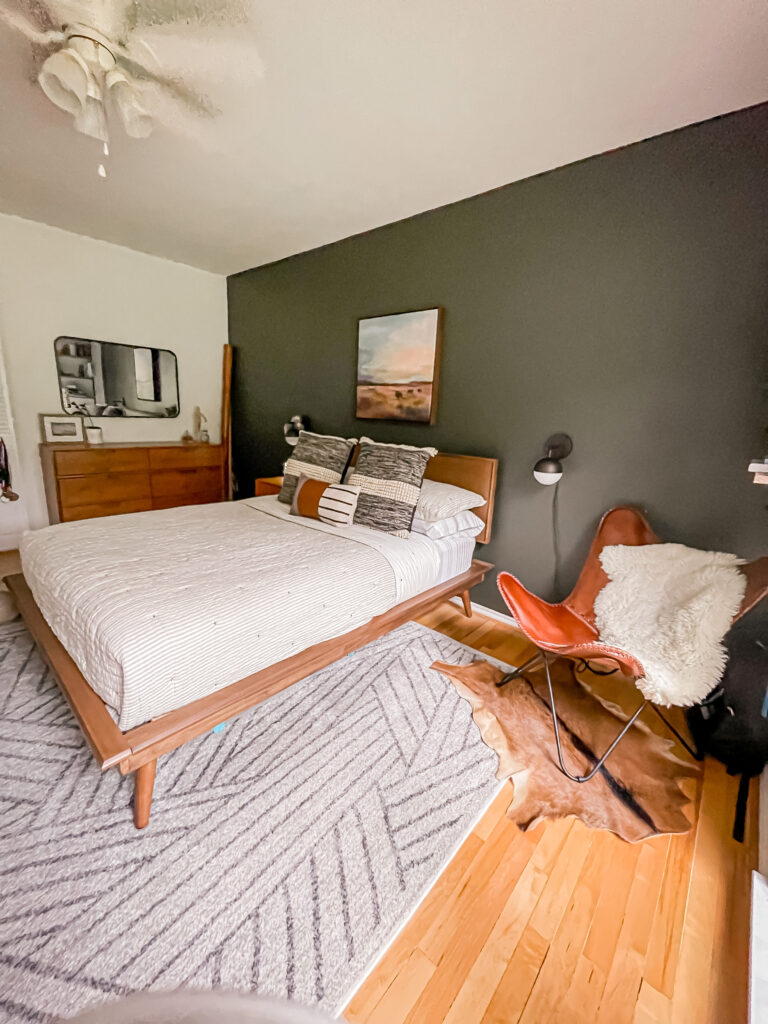
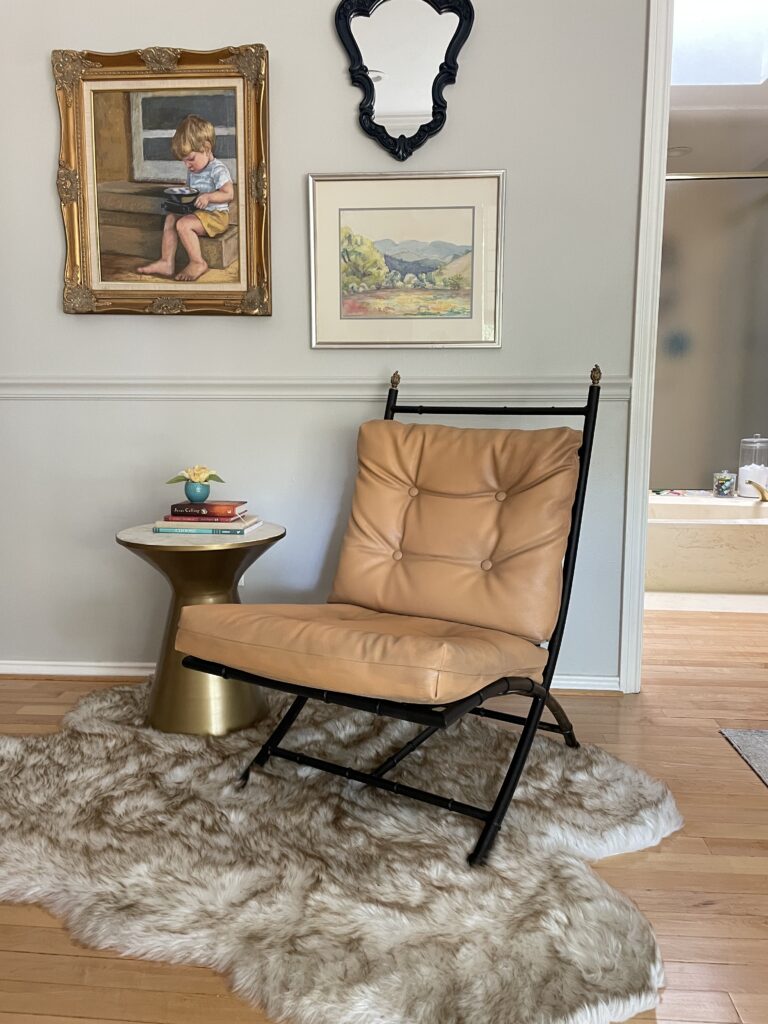
To conclude our Rug 101:
- Always get the correct size for your space
- Add rugs where they are not always expected
- Layer those rugs! It is fun and creates visual style and interest
- Create zones for your furniture to make the space more cohesive
Resources
Click images for link to buy
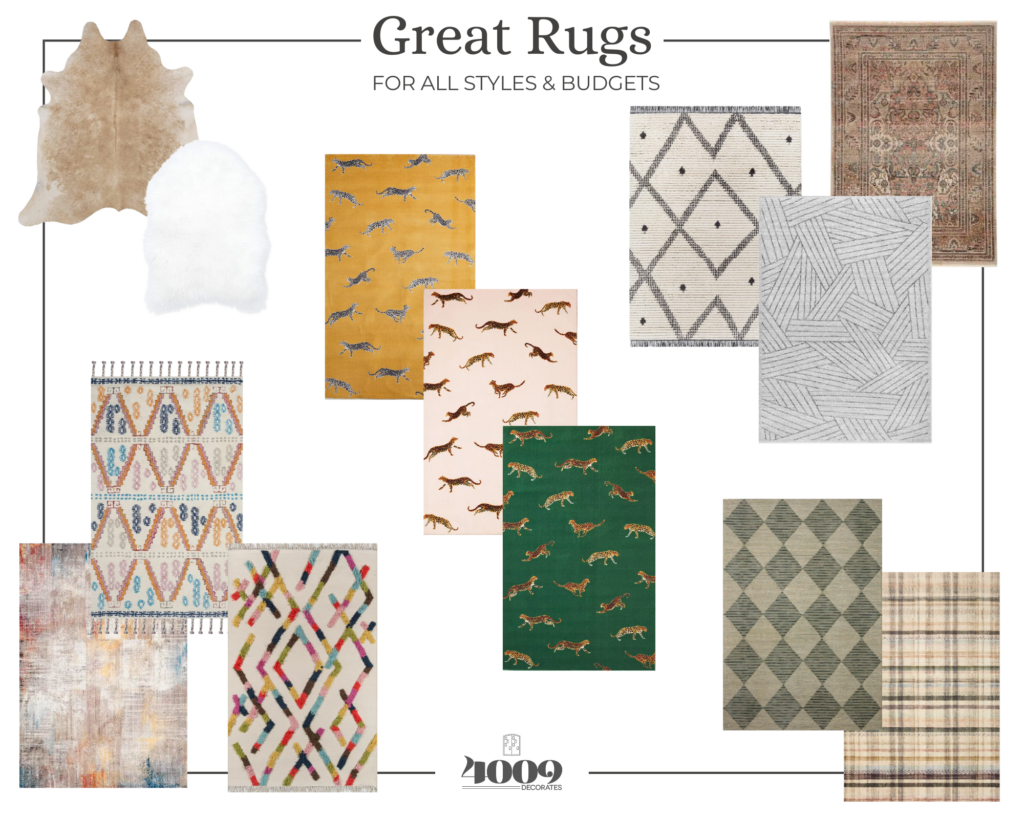
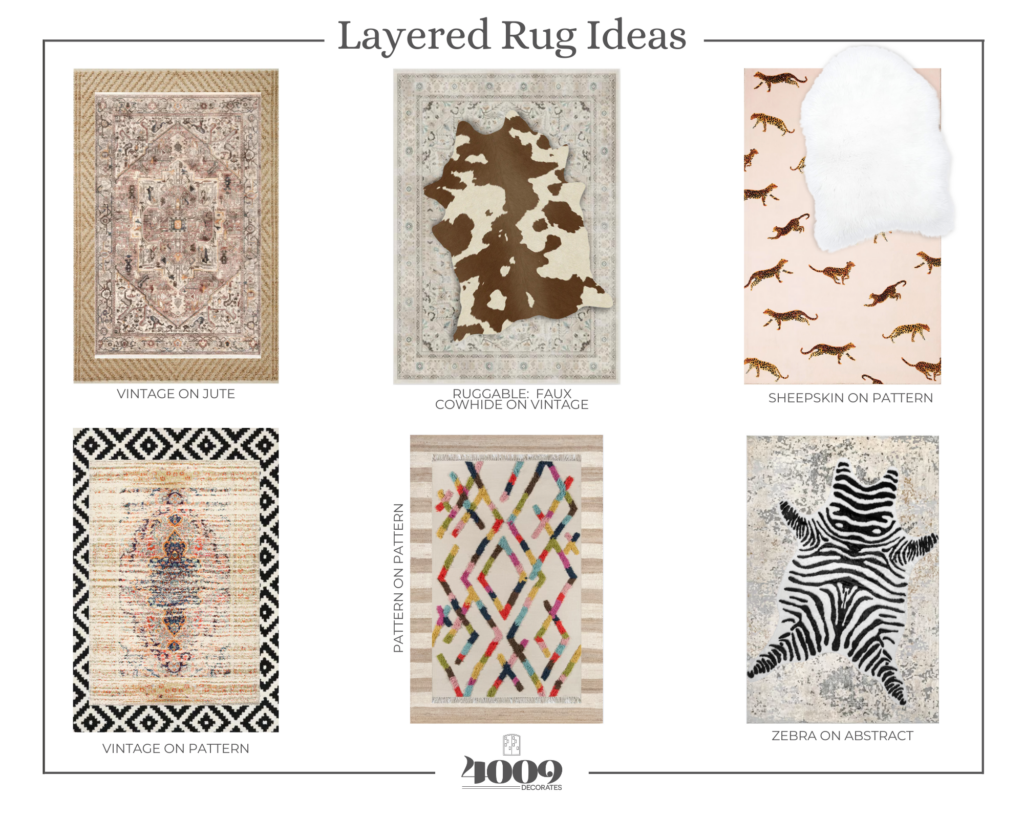
As always,
Hugs & High Fives
